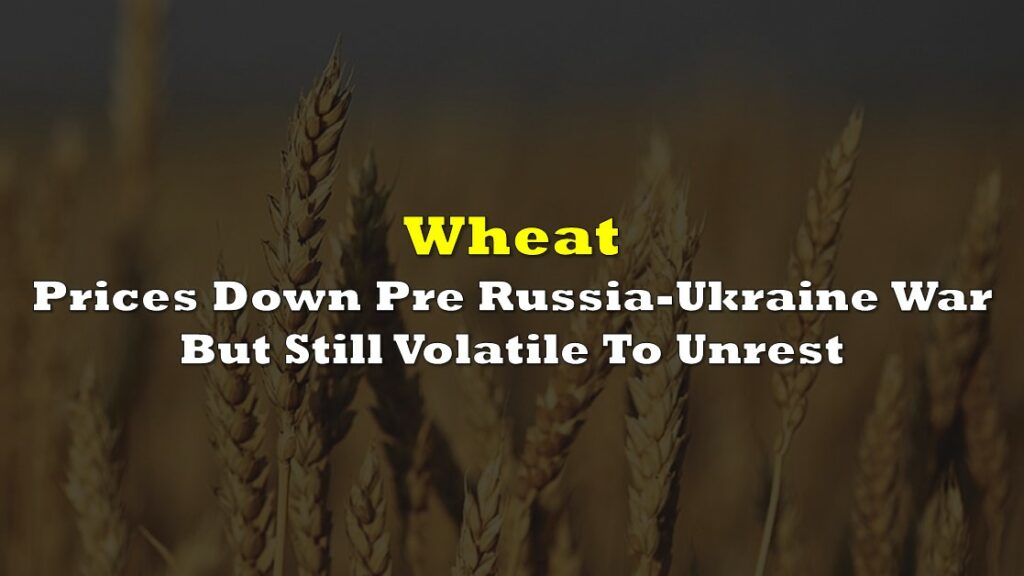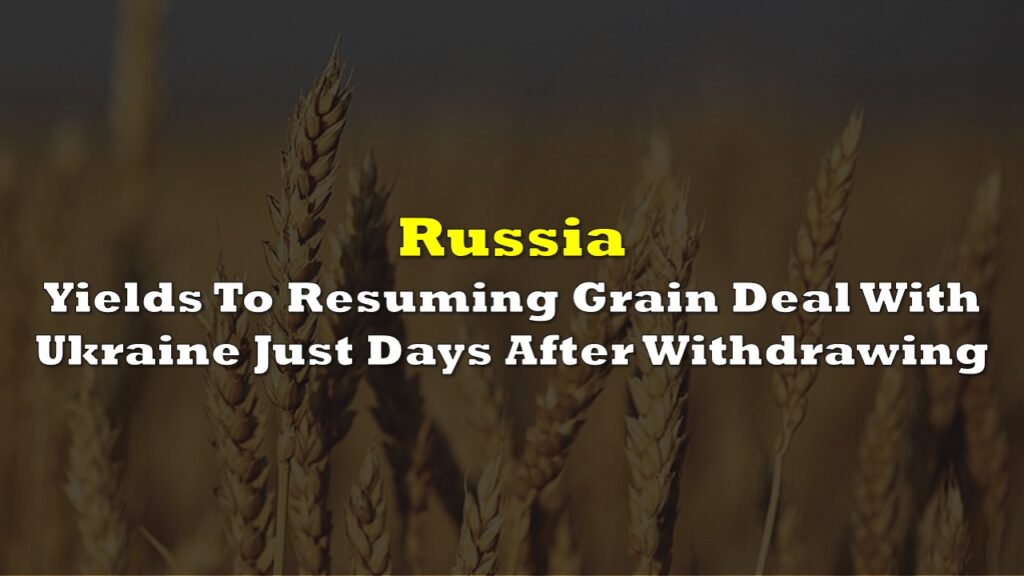The wheat market is facing significant turbulence as wheat futures for July 2024 have experienced a sharp decline, falling to around $5.61 per bushel. This marks a 1.96% drop from the previous day and represents a six-week low.
The continuous downtrend, with wheat trading in the red for 15 of the last 17 days, underscores the market’s bearish sentiment. This decline is attributed to a combination of increased U.S. wheat supply and adverse weather conditions affecting production in major wheat-producing regions globally.
The Great Wheat Collapse continues as it has now traded red in 15 of the last 17 days 📉 pic.twitter.com/HICeClO9Pz
— Barchart (@Barchart) June 22, 2024
According to the latest World Agricultural Supply and Demand Estimates (WASDE) report, the U.S. wheat supply is forecasted to reach 1,875 million bushels, up 17 million from the previous month. This increase is driven by favorable weather conditions and improved yield prospects. However, this local surplus is contrasted by a projected global supply reduction.
The global wheat outlook for the 2024/25 season is less optimistic, with an anticipated reduction of 5.7 million tons, bringing the total to 1,050.3 million tons. Significant production decreases in Russia, Ukraine, and the European Union are major contributors to this decline. Adverse weather conditions, including drought in Russia and Ukraine and wet weather in France, have also negatively impacted production estimates. Russia’s production forecast has been reduced by 5 million tons, while Ukraine’s is down by 1.5 million tons.
India’s wheat import duty
In response to rising domestic prices and the need to boost supplies, India is set to resume wheat imports by lowering the 44% duty on inbound shipments and imposing stock limits on the grain. This move aims to tame prices and ensure sufficient supply amidst global shortages.
Three officials, speaking on condition of anonymity, provided insights into the government’s strategy. “If at all India imports, it is unlikely to be more than 3-4 million tonnes,” one official stated. The domestic price of wheat in key markets ranges between ₹26,980 and ₹27,100 per tonne, while the minimum support price is ₹2,275 per tonne.
M.J. Khan, chairman of the Indian Chamber of Food and Agriculture, commented on the situation: “As per my understanding and discussions at the International Grains Council meeting last week in London, India might import a million or two tonnes of wheat to soften prices and keep a little extra for food security purposes.”
India’s government is also considering implementing stock limits to regulate the market. Proposed limits include 3,000 tonnes for wholesalers, 10 tonnes for retailers, and 3,000 tonnes at all depots for big chain retailers. Additionally, open market sales are planned, with an initial release of 2.5 million tonnes likely starting in July or August.
The Centre’s wheat procurement closed at 26.6 million tonnes, slightly higher than last year’s 26.2 million tonnes but below the target of 31 million tonnes. With a significant portion allocated to welfare schemes, the government has 8.2 million tonnes available for open market sale.
Traders have welcomed the potential reduction in import duties, hoping it will stabilize prices. The landed price of wheat at Indian ports, currently $280-$290 per tonne, could become more competitive without the import duty, potentially easing domestic prices.
Khan emphasized the importance of strategic imports: “Given the fact that wheat production estimates are at the same level as last year or a million or two less, it’s better that the government allows private trade to import a couple of million tonnes of wheat by lowering duty.”
India is the second-largest wheat producer in the world, with an annual production of around 112.9 million tonnes. However, its import activities have varied over the years. For instance, in 2020-21, India imported around 2.6 million tonnes of wheat, primarily to manage domestic shortages and price stability. The country’s wheat imports typically come from major wheat-exporting nations like Russia, Australia, and the United States.
Information for this briefing was found via Mint, Trading Economics, and sources mentioned. The author has no securities or affiliations related to this organization. Not a recommendation to buy or sell. Always do additional research and consult a professional before purchasing a security. The author holds no licenses.









